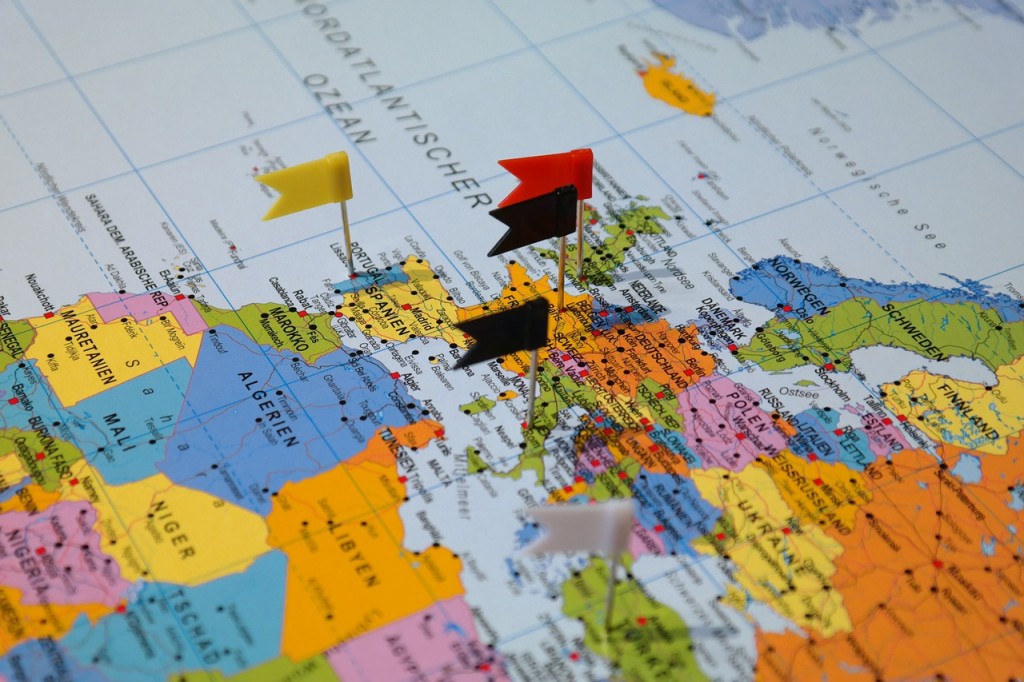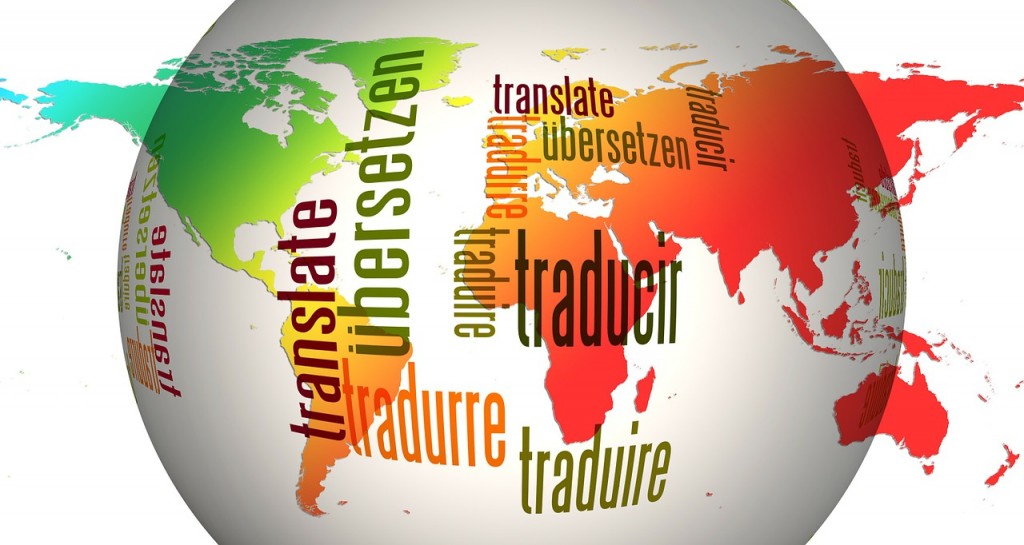Creating a brand identity that appeals to your audience and broadcasting it is hard work. One of the essential elements of brand identity is cohesiveness, and you’ve probably concentrated a large percentage of your efforts on creating a unified message—as you should. However, it’s important to recognize that message can all-to-easily get lost in translation if your content and social media communications don’t follow a strong localization strategy.
Shrinking Globe, Expanding Horizons
The digital revolution has shrunk the world, there’s no doubt about that. Exchanging information with contacts in Paris and Delhi is as easy as chatting with the next door neighbor. But ease of access doesn’t necessarily equal good communication. That’s where localization comes in.

What is localization?
Localization refers to the process of adapting language, communication strategies, and sometimes even content to better suit your target audience in a certain location. It’s important to keep in mind that localization is much more than language translation—it’s about tailoring your message to ensure that it comes through loud and clear despite regional or cultural differences and expectations. For example, while (aside from a few spelling differences and language conventions) American and British consumers speak the same language. Nonetheless, savvy content creators and marketers make an effort to tailor their messages for American or British audiences specifically.
Language translation
Obviously, one of the most important aspects of localization is language. That doesn’t just mean using English in English speaking countries, either. First, there are regional dialects and spellings to consider. If you want your audience to feel at home with your content, you need to ensure that it’s accessible and is communicated in a familiar manner. There’s much more to that than translating into a national language. Some elements to consider:
o Dialects
o Regional spellings
o Regional terms (For example—chips, biscuits, jelly, and pants are all English terms, and each can mean something entirely different to American and British readers, especially when context is taken into consideration!)
Emphasis on Elements of Your Message
The best example of this aspect of localization in action is cinema posters. Hollywood movies are popular around the globe, but they’re marketed differently in each region. Why? The message the studio wants to send is “This is a movie you want to see.” But the reasons “you” want to see it vary from place to place. For films, this may mean emphasizing a different actors depending on their popularity in particular regions, or emphasizing the film’s romance/action/drama/sexy elements more or less in certain regions.
At its heart, localization means one thing: understanding your audience and demonstrating that fact. Your audience, in a digital age, isn’t homogenous. They have something in common: your product and your brand. But that doesn’t mean their motivations, preferences, and communication strategies are the same across the board. If you want to woo audiences, you do it on their terms—that’s what localization is all about.
How to Localize without Diluting Your Message
You’ve surely heard the old saying that “you can’t please all of the people all of the time.” Well, you can’t—especially if you only stick to one communication strategy. But you can certainly please a lot more people, more of the time, if you open up multiple lines of communication, target the right audiences, and make an effort to engage each section of your audience on their own terms. Here are some of the simplest, most effective ways to ensure your message is getting out there, and isn’t getting lost in translation:
1. Create regional social media pages.
It’s worth the effort to create regional social media personas and pages when you have a very diverse audience, even if they’re only geographically diverse. Let’s say you’re a huge fan of your neighborhood’s local bar and grill. You love the specials, the waitresses know your “usual,” and the bartender always has an open ear when you’ve had a bad day.
If they’re an independent restaurant, they’ve likely got their own Twitter or Facebook page, and you’ve probably already followed them. If they’re part of a chain, however, you’re not going to bother liking or following the corporate Twitter or Facebook—it’s simply too far removed from your personal motivations for going there. If, however, their individual location has its own social media representation, you’d probably be glad to get updates from them.
Regional and local social media contact points don’t always have to be about translating your message; sometimes, localization is just about bringing your message closer to home.
2. Use geotargeting to deliver localized posts to the right readers.
Now, in some cases, it doesn’t make sense to create multiple Facebook profiles. But it does make sense to target regional readers with specific posts. Huge, global brands do this on Facebook already—and you can too. By utilizing the post targeting too, you do two things. First, you make sure that your readers get content they can read and understand. More importantly, you’re not spamming their newsfeed with the stuff they can’t read and don’t want to.
Your Spanish speaking audience, for example, may appreciate updates when they’re forthcoming, and you may not be ready to employ a full-time Spanish speaking social media expert. You just have your most vital updates translated. That’s great! But you’ll find your fans are less likely to follow if their feeds are choked full of English content they don’t want, daily, just to get a monthly update they can read.
3. Take it a step further with demographic targeting.
You’ll notice that wildly successful brands often have different lines of products for different demographics. Victoria’s Secret, for example, does an excellent job of catering to women from different regions, of different ages, in different economic classes, all while maintaining its brand image—luxurious, sexy, and beautiful. Their target market of twenty years ago has aged, but instead of committing to being a brand for only older women, or abandoning their loyal audience, they’ve created new lines—and just as importantly, new ways to communicate with different demographic sectors of their audience. Apps, sites, and social media accounts are designed to appeal to different subgroups within their market, while post targeting further refines their communications.
Why Localize?
We’ve already discussed one of the major reasons for localization—to ensure that your message is received in the spirit in which it was intended. But there’s another reason: engagement. It’s a word we use extensively here, and for good reason.
You may have an audience of hundreds, thousands, or millions, but there’s a tiny percentage within that wider audience that does more for your brand than your best marketing gurus. Who, you ask? Fans that are active—actively reading your content, sharing it, discussing it, sending in questions, making comments, and providing you with the elusive marketing dream-come-true known as word of mouth.
Your fans in other regions may not be bothered that your message isn’t expressly tailored to their preferences—the fans you already have, that is. They already know you’re valuable. But they aren’t going to bother sharing your posts, re-tweeting you, or even singing your praises to their friends if they can’t point to your pages and say, “See? See why I love them?” You’re essentially asking your fans to do the work of localization for you, if you don’t deliver content that’s sharable in their region.
If you don’t localize, you’re cutting off your loyal fans in other regions and demographic groups that want to engage, want to share your content, want to help you expand your audience. You’re sending a subtle message that says you don’t need their engagement—and that’s not true. You do, and you want it, if you want to compete in a digital, global, shrinking-but-expanding world.
Why Wouldn’t You Localize?
When you think about it, what reasons are there for not having good localization practices? You prefer to limit yourself regionally and demographically? You’d rather have fewer fans? Of course, not all brands appeal to all people—but there are always more markets, always more niches that you can tap into. If you’re ambitious (and if you weren’t, why would you be reading this?), you recognize that, and you’re not okay with letting opportunities slip through your fingers.
Localization opens many doors, and closes none—there are, frankly, no good reasons to not explore localization and how it can be used to expand your audience and improve your message. When something as simple as geo-targeting or local dialect could increase your exposure exponentially, why would you ignore that?
And it’s not an all-or-nothing proposition; you can experiment with different strategies, test the waters, and design a tailored localization strategy that fits your brand. Let localization open doors for you, and for your new potential fans, clients, and customers. You may find that taking even the smallest steps toward providing a customized experience for your audience can open up a whole new world of opportunity.
Bonus: Localizing infrastructure
The importance of website speed has already been covered from all angles, in this post by Benjamin Spiegel you can read all about how speed affects search engine rankings and your user experience. Why is this important? Localization is not only about languages and messages, it’s also about where you decide to open shop or deploy servers. In order to tackle the issues of your website speed you need a content delivery network, you can read about the benefits of CDN’s on John Ramptons post that covers the subject. Users understand speed, blazing fast load times are a universal language.
This post was written by Avishai Sam Bitton.
Want to read more articles on the subject? Check out this awesome Roojoom





0 Comments